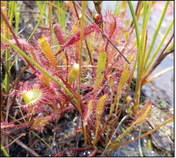Rare species last seen 40 years ago among finds by DNR plant detectives


A rare carnivorous plant last documented in Ashland County along with 59 never-before-seen populations of other rare plants in Wisconsin are among discoveries made by volunteers ...


